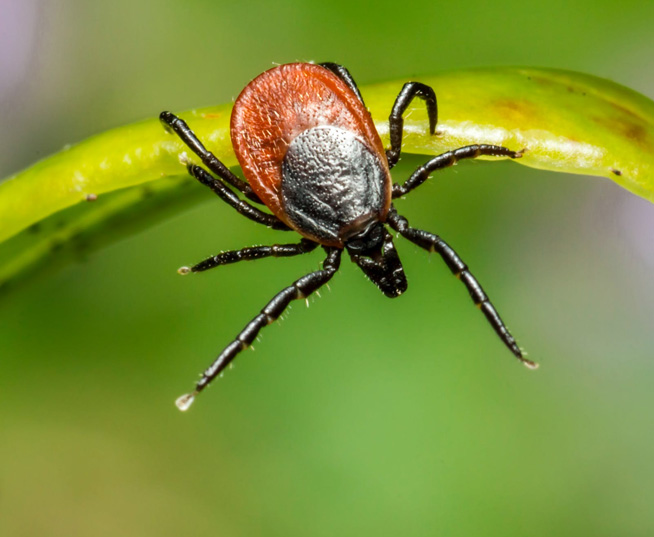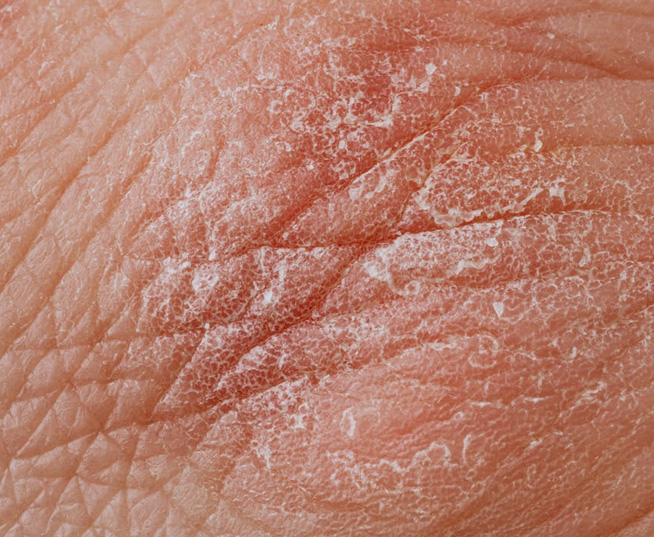Starseed R/evolution
The Awakening
How Climate Change is Affecting Lyme Disease and other Tick Borne Diseases
We are presently experiencing an epidemic of Lyme disease and tick-borne disorders worldwide.
A decade ago, the United States was reporting approximately 30,000 cases of Lyme disease per year, and as per the CDC in 2021, almost ½ million Americans are now being infected yearly. The same situation exists in Europe, Asia, and Australia where Lyme and tick borne disease (TBD) cases have grown over the past decade, resulting in large numbers of individuals suffering from chronic fatiguing, musculoskeletal, neuropsychiatric illnesses.
Approximately 2 million individuals in the United States alone have been diagnosed with chronic Lyme disease (CLD)/Posttreatment Lyme Disease Syndrome (PTLDS), and the true number of people living with CLD/PTLDS in other countries is unknown, although it likely involves millions of individuals since Lyme disease has been recognized in Europe since the late 1800’s. The reason for this increase in tick borne diseases is multifactorial, including large numbers of individuals moving to properties surrounded by wooded areas; migratory birds carrying ticks’ long distances, and imbalances in the ecosystem with increased deer and mice populations, as predator populations have decreased.
One of the primary reasons we are seeing a significant increase in tick borne diseases however is climate change. Reproductive rates of insect populations, including ticks, mosquitoes and fleas increase at higher global temperatures, resulting in higher numbers of vector borne diseases. These include malaria, dengue fever, West Nile, Chikungunya and Lyme disease, as well as ehrlichiosis, Anaplasmosis, Rocky Mountain spotted fever, hard tick relapsing fever (Borrelia miyamotoi), alpha gal allergy and Powassan encephalitis. Over the past several decades, seven new tick borne diseases have been identified in the United States, along with the discovery of over 16 new borrelia species. Many of these bacteria like Borrelia burgdorferi, have been around for millions of years, as have other tick borne diseases like Babesia, but changes in the ecosystem and climate are leading to an expanding range and number of species, with more and more individuals getting sick every year. A 2015 study from the Cary Institute of Ecosystems Studies also showed that due to global warming trends, infected ticks are emerging 3 weeks earlier in the springtime, making exposure to these diseases much more likely.
The spread of Lyme and TBDs has been compounded by difficulties with present diagnostic methodologies. These diseases resemble other chronic illnesses. Lyme disease has been called the “great imitator” and is oftentimes misdiagnosed as chronic fatigue syndrome/Myalgic Encephalitis, fibromyalgia, autoimmune illness including MS, lupus, and rheumatoid arthritis, and even dementia. The symptoms of Lyme disease, including fatigue, muscle, joint and nerve pain, headaches, memory and concentration difficulties, insomnia, neuropsychiatric symptoms (depression, anxiety, OCD, psychosis) and dysautonomia (an imbalance of the Autonomic Nervous System which controls the blood pressure and pulse rate, as well as bowel and bladder function) overlap the symptoms of these other illnesses. These same symptoms are also seen in acute and long COVID due to the infections causing inflammation and immune dysfunction, leading to the possibility of an improper diagnosis. Some of these illnesses have diagnostic markers and specific clinical presentations that can help a health care provider make the proper diagnosis, but for the most part, the above illnesses overlap those of Lyme disease, and lack specific, easily identifiable biomarkers to correctly identify the cause of the symptoms.


Establishing a clinical diagnosis of Lyme disease is essential, but can be difficult as the bacteria, Borrelia burgdorferi, has developed multiple stealth technologies to avoid recognition by the immune system. It can hide in the body by changing its outer surface proteins; change forms in response to temperature, nutrient availability, and presence of antibiotics; hide inside the intracellular compartments of cells, as well as in biofilms which shield the bacteria from antibiotics and immune recognition. The Lyme bacteria can also go dormant for long periods of time in biofilms in what are known as “persister” cells. These cells can reactivate when biological conditions are optimal, leading to a relapsing and remitting illness, affecting the individual’s ability to work and be productive. The rise of Lyme and associated diseases combined with a growing burden of environmental toxins have also contributed to rising healthcare costs. Five percent of the US population has been diagnosed with CFS/ME and fibromyalgia; over 20% have been diagnosed with an autoimmune illness; 46.5 million Americans have been diagnosed with preclinical dementia, and over 50% of Americans now suffer with at least one chronic health problem. Infections and environmental toxins increase inflammation, the number one cause of all acute and chronic disease and have led to a 31-fold increase in healthcare costs over the past 4 decades. The increase in infections along with difficulties in diagnostic methodologies, and conflicting treatment guidelines, makes Lyme disease and associated co-infections a formidable challenge for health care authorities, increasing the number of some of the above illnesses. How then, can we correctly establish the diagnosis and ensure proper treatment?
The diagnosis of Lyme disease is first and foremost a clinical one, and there are 6 signs and symptoms which allow a healthcare provider to suspect exposure to Borrelia burgdorferi. First, most individuals have more than one symptom. Lyme disease is a multisystemic illness affecting a broad range of body systems, oftentimes causing fatigue, migratory pain, insomnia, cognitive problems, depression, and anxiety. Secondly, symptoms tend to come and go with good and bad days, without a clear reason why. Third, the pain associated with Lyme disease tends to migrate around the body, whether in the joints, muscles, and nerves. Migratory nerve pain (tingling, numbness, burning and/or stabbing sensations) is especially frequent in Lyme disease, and is a hallmark symptom not seen in other acute and chronic illnesses. Fourth, in women, hormonal changes affect Lyme symptoms, as women tend to worsen right before, during, and after the menstrual cycle. Fifth, symptoms usually improve after antibiotic therapy (for Lyme or an unrelated infection like a urinary tract infection) or worsen due to a killing off of the spirochetes leading to a Herxheimer reaction (JH reaction) with inflammatory molecules being released. The 6th and final method to tell if someone has been exposed to Borrelia burgdorferi (Bb), or a similar spirochete, is that they have positive blood tests for Lyme and associated tick-borne diseases. Although standard blood tests for Lyme disease are not reliable (ELISA, Western blot) because they miss the large number of different strains of borrelia, there are 5 bands on the Western Blot, or Immunoblot (IgeneX laboratory) that are specific for exposure to Bb: these include the 23 (Osp C), 31 (Osp A), 34 (Osp B), 39, 83-93 + VLsE outer surface protein(s). Any one or combination of these bands in the right clinical setting implies exposure to borrelia and can help establish the diagnosis. An erythema migrans rash (EM rash), present in approximately 50% of cases (range 10-70%), is also definitive evidence of Lyme disease, and DOES NOT require laboratory confirmation to make the diagnosis. Other tick-borne diseases such as Babesia and Bartonella are similarly unable to be reliably diagnosed using standard screening procedures, due to multiple species and their ability to hide in the body. Finding Lyme and associated tick-borne diseases therefore oftentimes requires a ‘panel approach’, using different laboratory markers (ELISA, C6 ELISA, IFA, PCR, FISH, LTT, culture, etc.) through specialized laboratories to ensure the correct diagnosis.
One simple way to determine if your symptoms may be due to Lyme disease is to take the Horowitz Lyme-MSIDS Questionnaire (HMQ). This is a validated screening tool to determine the probability of having Lyme and associated tick-borne illness, without an EM rash. A score > 63 on the HMQ confers a high probability of LD; between 45-62, probable LD; 25-44, possible LD, and healthy individuals scored below 24. Questions 1 +22 on the HMQ indicate a possible co-infection with Babesia. Discriminant analysis showed we could accurately classify the Lyme Status of individuals using their HMQ scores with an overall accuracy of 87.6%, which is superior to two-tiered testing. The questionnaire can be found online at www.cangetbetter.com and printed off to score and evaluate your risk and give to your healthcare provider.
Apart from exposure to Lyme disease, patients can have up to 16 different reasons why they stay ill, and I call this multifactorial diagnostic and treatment model MSIDS: Multiple Systemic Infectious Disease Syndrome. I discovered these factors while evaluating over 13,000 chronically ill individuals during the past 30 years at the Hudson Valley Healing Arts Center. These 16 factors can be broken down into primary sources of inflammation, including chronic infections, which can be bacterial in nature (i.e., Lyme borrelia, relapsing fever borrelia, bartonella spp., mycoplasma species, tularemia, etc.), parasitic (i.e., Babesia, intestinal parasites), viral (i.e., EBV, HHV6, West Nile), and fungal (i.e., Candida, mold exposure). Inflammation can also result from dysbiosis of intestinal bacteria, leaky gut with food allergies and sensitivities, sleep disorders, exposure to environmental toxins (heavy metals, mold), autoimmunity, and nutritional deficiencies (zinc, copper, magnesium). These multiple sources of inflammation, when combined, oftentimes results in downstream effects on the body including mitochondrial dysfunction, POTS/dysautonomia, hormonal dysfunction (adrenal, sex hormones, thyroid), neuropsychiatric disorders and liver dysfunction. All of these factors can increase chronic fatigue, pain, insomnia, memory concentration problems, and neuropsychiatric symptoms. It is therefore essential in a chronically ill individual to evaluate and properly treat all the sources of inflammation and their downstream effects if we are to maximize health and help prevent long-term complications.
Although there has been much controversy in the medical literature during the past 40 years regarding the diagnosis and treatment of Lyme disease, thanks to excellent university-based researchers at Stanford, Johns Hopkins, the University of New Haven and Northeastern University, we have discovered that the biofilm and “persister” forms of Borrelia can help explain in part chronic persistent symptoms and ongoing inflammation keeping patients ill. I published several studies in the peer review medical literature on the effectiveness of a novel treatment for chronic Lyme disease/PTLDS called dapsone combination therapy (Plaquenil, doxycycline, rifampin, dapsone) which acts on the biofilm and persister forms of Borrelia. We made a major medical breakthrough in 2020, when we proved that dapsone combination therapy was not only highly effective against the biofilm forms of Borrelia, but that 8 weeks of double dose dapsone combination therapy (DDD CT) could lead to long-term remission for over one year in 45% – 58% of patients who were sick for decades. These were patients who had failed multiple oral and IV antibiotics during months or years of prior treatment. We published these results in two excellent medical journals, BMC Research, and the journal Antibiotics, and we are now in the process of applying for a multicenter, randomized controlled trial of DDT CT to help prove its efficacy to the broader medical community.
In conclusion, Lyme and associated tickborne diseases represent a major emerging threat to the health and well-being of individuals across the world. Compounding the risks, many of these infections are also now found in the blood supply, increasing an individual’s transfusion risk, and can be transmitted by solid organ transplantation, as well as potentially transmitted from a mother to her developing fetus. This can result in fetal death, fetal abnormalities, and adverse outcomes in the newborn. Climate change is helping to drive the significant increase in these infections and therefore is one more reason why we must take immediate and decisive action to reverse our present course of global warming, while adopting a comprehensive approach to the diagnosis and treatment of Lyme and associated TBD’s. Regular prevention practices (tick checks) to avoid getting bit by the rising numbers of ticks spreading in our environment is now essential (i.e., permethrin treated clothing, 20% picaridin, IR 3535, lemon eucalyptus oil, or application of DEET or nootkatone to exposed areas of the skin) if we are to avoid the worst complications of these diseases. Prevention is especially important since some life-threatening tick-borne infections like Powassan encephalitis can be transmitted within 15 minutes of a tick bite.
Please speak to your healthcare provider if you have been suffering from ‘medically unexplained symptoms’ or from one of the above chronic illnesses. The Lyme-MSIDS model has helped many chronically ill individuals who were sick for decades regain their health. It may be the answer you have been searching for.
References:
Publications /Abstracts
NY Times Science Best Seller: Why Can’t I Get Better? Solving the Mystery of Lyme and Chronic Disease. Dr Richard I. Horowitz. St Martin’s Press, NYC. Publication date November 2013
Why Can't I Get Better? Richard Horowitz, M.D. HC ISBN-13: 978-1-250-01940-0; ISBN-10: 1-250-01940-0; 6 1/8 9 ¼ ● 526 pages EISBN-13: 978-1-250-03848-7
National Bestseller: How Can I Get Better? An Action Plan for Treating Resistant Lyme and Chronic Disease. St Martin’s Press, NYC, publication date February 2017. How Can I Get Better? Richard Horowitz, M.D. HC ISBN 978-1-250-07054-8 (hardcover) ISBN 978-1-250-11144-9 (e-book)
Co-author, Tick-borne Disease Working Group report to Congress, November 2018: https://www.hhs.gov/sites/default/files/tbdwg-report-to-congress-2018.pdf
Co-author, HHS Other Tick-borne infections and Co-infections subcommittee report 2018 https://www.hhs.gov/ash/advisory-committees/tickbornedisease/reports/other-tbds-2018-5-9/index.html
Co-author, HHS Babesia and Tick-borne Pathogens subcommittee report 2020
Scientific Publications:
Horowitz, R.I.; Freeman, P.R. Efficacy of Double-Dose Dapsone Combination Therapy in the Treatment of Chronic Lyme Disease/Post-Treatment Lyme Disease Syndrome (PTLDS) and Associated Co-infections: A Report of Three Cases and Retrospective Chart Review. Antibiotics 2020, 9, 725. https://doi.org/10.3390/antibiotics9110725
Horowitz, R.I., Murali, K., Gaur, G. et al. Effect of dapsone alone and in combination with intracellular antibiotics against the biofilm form of B. burgdorferi. BMC Res Notes 13, 455 (2020). https://doi.org/10.1186/s13104-020-05298-6
Shah, J.S.; Mark, O.; Caoili, E.; Poruri, A.; Horowitz, R.I.; Ashbaugh, A.D.; Ramasamy, R. A Fluorescence in Situ Hybridization (FISH) Test for Diagnosing Babesiosis. Diagnostics 2020, 10, 377. https://www.mdpi.com/2075-4418/10/6/377 PDF Version: https://www.mdpi.com/2075-4418/10/6/377/pdf
R.I. Horowitz, P.R. Freeman, Three Novel Prevention, Diagnostic and Treatment Options for COVID-19 Urgently Necessitating Controlled Randomized Trials, Medical Hypotheses (2020) https://www.sciencedirect.com/science/article/pii/S0306987720308276?via%3Dihub
Horowitz, R.I., Freeman P, Bruzzese, J. Efficacy of glutathione therapy in relieving dyspnea associated with COVID-19 pneumonia: A report of 2 cases. Respiratory Medicine Case Reports, April 21, 2020. Article Number: 101063 https://doi.org/10.1016/j.rmcr.2020.101063
Horowitz R, Freeman PR. Healthy Fetal Outcomes using a Novel Treatment for Maternal Lyme Disease and Babesiosis During Consecutive Pregnancies: A Case Study and Literature Review. Arch Med Case Rep. 2020; 2(1): 1-19. https://www.scientificarchives.com/admin/assets/articles/pdf/healthy-fetal-outcomes-using-a-novel-treatment-for-maternal-lyme-disease-and-babesiosis-during-consecutive-pregnancies-a-case-study-and-literature-review-20200205050242.pdf
Horowitz, R.I., The Global Rise of Chronic Diseases: Why Broaden the Paradigm to Include Tick-borne Illness and Environmental Toxin Exposure? Arch Med Case Rep. 2019, Volume 1, Issue 1. https://www.scientificarchives.com/admin/assets/articles/pdf/the-global-rise-of-chronic-diseases-why-broaden-the-paradigm-to-include-tick-borne-illness-and-environmental-toxin-exposure-20191222051232.pdf
Horowitz, R.I.; Freeman, P.R. Precision Medicine: retrospective chart review and data analysis of 200 patients on dapsone combination therapy for chronic Lyme disease/post-treatment Lyme disease syndrome: part 1. International Journal of General Medicine 2019:12 101–119
https://www.dovepress.com/precision-medicine-retrospective-chart-review-and-data-analysis-of-200-peer-reviewed-article-IJGM; https://www.ncbi.nlm.nih.gov/pubmed/30863136
Horowitz, R.I.; Freeman, P.R. Precision Medicine: The Role of the MSIDS Model in Defining, Diagnosing, and Treating Chronic Lyme Disease/Post Treatment Lyme Disease Syndrome and Other Chronic Illness: Part 2. Healthcare 2018, 6, 129. https://www.ncbi.nlm.nih.gov/pubmed/30400667
Improvement of common variable immunodeficiency using embryonic stem cell therapy in a patient with lyme disease: a clinical case report. Richard Horowitz, Phyllis R. Freeman. Clinical Case Report, Open Access, Wiley and sons. doi: 10.1002/ccr3.1556. https://onlinelibrary.wiley.com/doi/abs/10.1002/ccr3.1556
Horowitz R, Lacout A, Marcy PY, Perronne C, To test or not to test? Laboratory support for the diagnosis of Lyme borreliosis. Clin Microbiol Infect. 2017 Oct 10. pii: S1198-743X(17)30528-1. doi: 10.1016/j.cmi.2017.09.015. [Epub ahead of print] https://www.ncbi.nlm.nih.gov/pubmed/29030171/
Empirical Validation of the Horowitz Multiple Systemic Infectious Disease Syndrome Questionnaire for Suspected Lyme Disease. Maryalice Citera*, Ph.D., Phyllis R. Freeman, Ph.D., Richard I. Horowitz, M.D., International Journal of General Medicine 2017:10 249–273
https://www.dovepress.com/empirical-validation-of-the-horowitz-multiple-systemic-infectious-dise-peer-reviewed-fulltext-article-IJGM; http://www.ncbi.nlm.nih.gov/pubmed/28919803
Horowitz RI, Freeman PR (2016) Are Mycobacterium Drugs Effective for Treatment Resistant Lyme Disease, Tick-Borne Co-Infections, and Autoimmune Disease? JSM Arthritis 1(2): 1008.
Horowitz RI, Freeman PR (2016) The Use of Dapsone as a Novel “Persister” Drug in the Treatment of Chronic Lyme Disease/Post Treatment Lyme Disease Syndrome. J Clin Exp Dermatol Res 7: 345. doi:10.4172/2155-9554.1000345
Letters: Lyme disease: time to shift the paradigm. Approach to diagnosing Lyme disease misses a large proportion of cases, Dr Richard Horowitz BMJ 2016; 352 doi: http://dx.doi.org/10.1136/bmj.i113 (Published 13 January 2016). Cite this as: BMJ 2016;352:i113
Clinical Roundup: Selected Treatment Options for Lyme disease: Multiple Causative Factors in Chronic Disease. Alt and Compl Therapies. DOI:10. 1089/act.2012.18407. Mary Ann Liebert, Inc.Vol 18, No.4 Aug 2012. http://online.liebertpub.com/doi/abs/10.1089/act.2012.18407?journalCode=act
Human Babesiosis and Ehrlichiosis-Current Status. Shah, J., Horowitz, R., Eur Infect Dis, Vol 6, Issue 1, Spring 2012
Pain-Management Strategies in the Chronically Ill Lyme Disease Patient, Horowitz, R., P T. 2012 Apr; 37(4): 247–248
Coinfection with Borrelia burgdorferi and Babesia microti: bad or worse? Stricker RB, Burrascano JJ, Harris NS, Horowitz R, Johnson L, Smith PV, Phillips SE. J Infect Dis. 2006 Mar 15;193(6):901-2; author reply 902. PMID: 16479529


